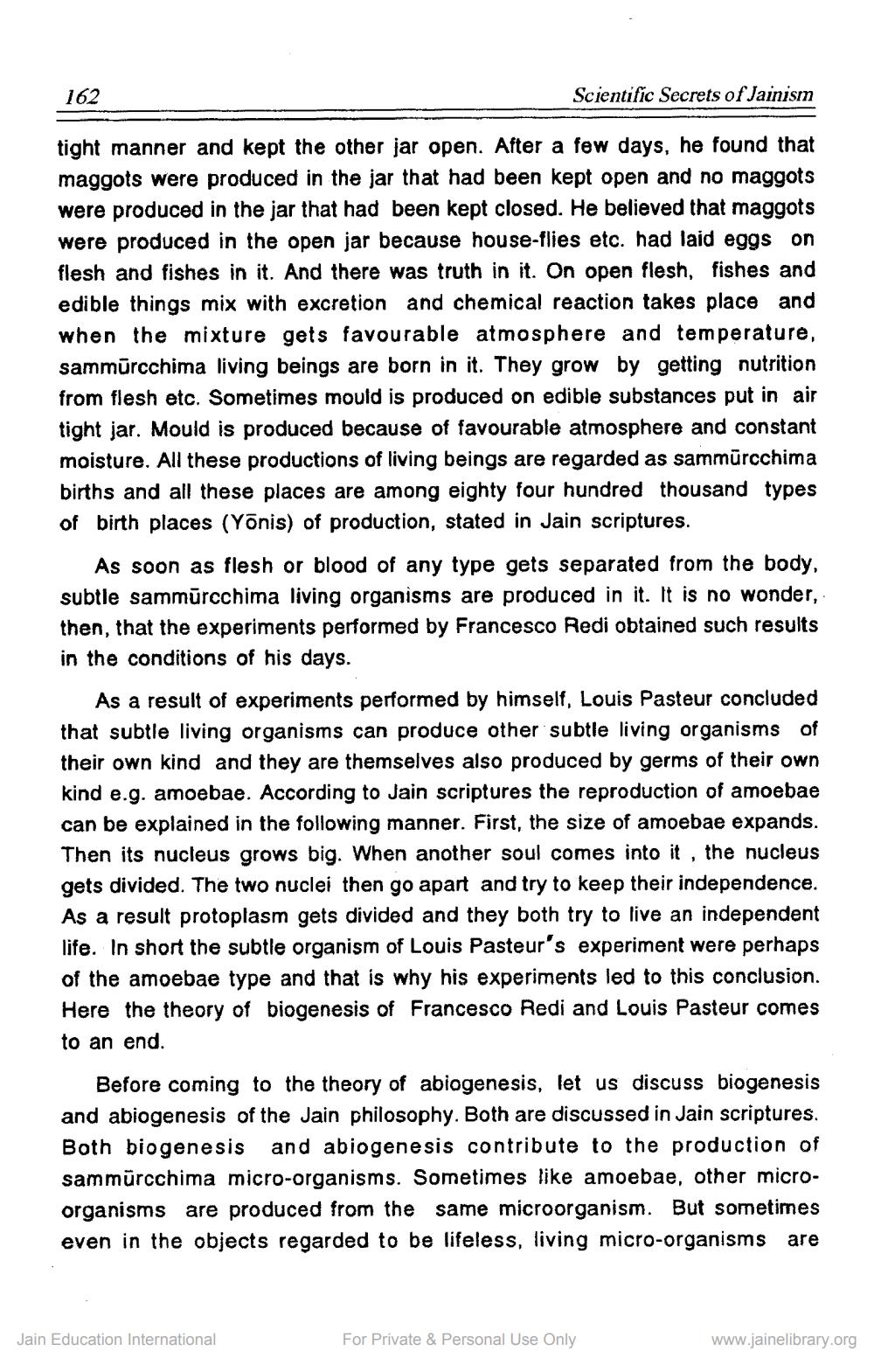________________
162
Scientific Secrets of Jainism
ht manner and kept the other iar oben. After a few days, he found that maggots were produced in the jar that had been kept open and no maggots were produced in the jar that had been kept closed. He believed that maggots were produced in the open jar because house-flies etc. had laid eggs on flesh and fishes in it. And there was truth in it. On open flesh, fishes and edible things mix with excretion and chemical reaction takes place and when the mixture gets favourable atmosphere and temperature, sammūrcchima living beings are born in it. They grow by getting nutrition from flesh etc. Sometimes mould is produced on edible substances put in air tight jar. Mould is produced because of favourable atmosphere and constant moisture. All these productions of living beings are regarded as sammūrcchima births and all these places are among eighty four hundred thousand types of birth places (Yonis) of production, stated in Jain scriptures.
As soon as flesh or blood of any type gets separated from the body, subtle sammūrcchima living organisms are produced in it. It is no wonder, then, that the experiments performed by Francesco Redi obtained such results in the conditions of his days.
As a result of experiments performed by himself, Louis Pasteur concluded that subtle living organisms can produce other subtle living organisms of their own kind and they are themselves also produced by germs of their own kind e.g. amoebae. According to Jain scriptures the reproduction of amoebae can be explained in the following manner. First, the size of amoebae expands. Then its nucleus grows big. When another soul comes into it , the nucleus gets divided. The two nuclei then go apart and try to keep their independence. As a result protoplasm gets divided and they both try to live an independent life. In short the subtle organism of Louis Pasteur's experiment were perhaps of the amoebae type and that is why his experiments led to this conclusion. Here the theory of biogenesis of Francesco Redi and Louis Pasteur comes to an end.
Before coming to the theory of abiogenesis, let us discuss biogenesis and abiogenesis of the Jain philosophy. Both are discussed in Jain scriptures. Both biogenesis and abiogenesis contribute to the production of sammürcchima micro-organisms. Sometimes like amoebae, other microorganisms are produced from the same microorganism. But sometimes even in the objects regarded to be lifeless, living micro-organisms are
Jain Education International
For Private & Personal Use Only
www.jainelibrary.org




